Amazing! So much fun.
But then it started raining so I went home afterwards.
This is one of seven movies Ozu made in 1930.
It seemed like 35% of all Japanese men looked exactly like this — that stache, those glasses, that hairdo, that collar, that tie — before WWII (according to movies), and then 0% afterwards? It’s a very distinctive look, signifying upper class functionary, I guess?
I.e., EEEEVIL.
So evil!
This is a fun movie, but it’s obviously been churned out on a schedule: It doesn’t really make that much sense, and everything just looks a bit rushed — as if it’s the first take on everything.
Walk Cheerfully. Yasujirô Ozu. 1930.
This blog post is part of the Eclipse series.
Oh, right — this is the sequel to Matarazzo previous movie, so first we get reacquainted with the characters.
Aww.
This is so over the top.
This is a pretty weird movie. I mean, it doesn’t even make a stab at having an existence as a separate entity: It’s basically “and then what happened to these characters after the previous movie is…”
And since that movie ended with a very dramatic ending with both the villain and the central character dying, it’s… very odd?
It’s like making a movie about what happened after Hamlet ended.
Hamlet II: This Time There’s Almost Nobody Left Alive!
So it’s about the father’s new wife and her daughter?
Oh! Spoilers!
They killed off the new wife and the daughter… so this movie is gonna be about the father getting back together with the nun and then having a new son?
Is that gonna be it?
If so, that’s a pretty audacious level of crassness.
Like most people who aren’t Italian, the only older (50s and earlier) Italian movies I’ve seen are basically the neo realist movies (Bicycle Thieves etc) and Fellini etc. If this movie is any indication, they were really cookin’: I mean, the cinematography, the lighting, the sets, the editing, and, of course, the actors are all amazing. It looks great!
But no — this movie has a way weirder plot than I imagined? It’s about… the nuns doppelganger and the troubles she lands in.
Which is pretty bizarre.
Matarazzo’s movies were huge box office smashes at the time, and then dismissed as pap, and then apparently rediscovered several times. And I can see why: These movies have a really distinctive point of view, and they look really stylish, and are totally over the top.
So I’m happy that Criterion made this box set — these movies are interesting in many ways. But they’re also (I’m sorry to say) kinda boring? Matarazzo isn’t Douglas Sirk. But he’s kinda close, which makes me want to love these movies, but I just don’t. Sirk’s melodramas are really smart, and these melodramas are kinda stupid.
The White Angel. Raffaello Matarazzo. 1955.
This blog post is part of the Eclipse series.
Somehow I’ve bought even more comics… funny how that happens. So I guess I just have to spend all day reading comics if I want to be able to look out the window any time soon.
And… I think I’ll go with 90s music once again. I somehow seldom listen to music from that decade?
| Everything But The Girl: Walking Wounded |  |
12:48: Helem by Stanley Wany (Conundrum Press)
Wow, love the line work in this book…
Anyway, this is a narrative book, but is full of symbols and stuff (that I’m sure I don’t understand).
The book sort of disintegrates at points? It’s cool. And gorgeous.
And it’s exhilaratingly depressing.
The artwork is obviously heavily photo-referenced, but it seems like it might be based on stills from a video camera instead of photos, if that makes sense? Some of the facial distortions also look very electronic, as if these are snaps from a TV show that’s been distorted and then traced. I have no idea whether that’s the case, of course…
| Joni Mitchell: Hits |  |
13:17: Banana Syndrome by Tajo McBurnie
This is about the Talibananas and a spy and… it’s fun.
| Joni Mitchell: Hits |  |
13:21: Den uppgrävda jorden by Lisa Wool-Rim Sjöblom (Galago)
This book is about illegal adoptions from Chile to Sweden — during the 70s, children were stolen from poor Chilean women and sold to Swedish adoptive parents. This scandal was first uncovered decades later.
When the subject of a book is something as tragic and momentous as this, it seems almost impossible to say something negative about that book, but I’m going to be that asshole: This book isn’t very good. The artwork is basic and uninspiring, and the storytelling is really choppy. But worst of all, the way she presents it all makes this reader, at least, impatient and uncharitable towards the characters. Which is some amazing feat, because when writing about something as harrowing as this, you’d think that would be impossible.
| Arvo Pärt: Litany | 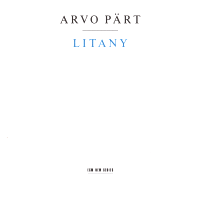 |
14:34: Vivarium 1 by Babtiste Virot
Oops. It’s in French.
But it looks good?
| Arvo Pärt: Litany |  |
14:38: Plummet by Sherwin Tjia (Conundrum Press)
At the start here, this felt like a kinda conceptual thing — like a Francis Masse comic from the early 80s? Even with the totally incongruous art style.
But… it’s more like a modern horror TV show, really: It’s a high concept (everything’s falling), but then you get all the usual plots inside that concept; i.e., fighting for survival against Fascist cannibals and all the rest. Oh, and love story.
| Seely: Julie Only | 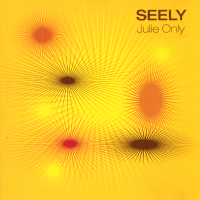 |
14:56: Dynamite Diva: “One-Eyed Wild Ride” by Jasper Jubenvill (Strangers Fanzine)
The artwork here is quite appealing — a cleaner version of, like, Benjamin Marra? Perhaps slightly influenced by Michael DeForge in the colouring, or even some Johnny Ryan bits…
What I’m saying is that this is very now, but in a 90s way — i.e., this could easily have been a 90s Fantagraphics book, art wise. However, the stories don’t really do anything for me. They don’t really seem to go anywhere interesting? I mean, for me? It’s just not my sort of thing? But I think it’s successful at being what it is.
Heh heh.
Is that Ed Piskor?
Indeed.
| Kreidler: Weekend | 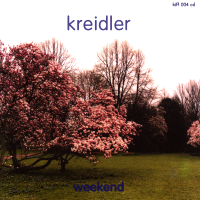 |
15:45: Jobb by Anders N. Kvammen (No Comprendo Press)
This is a Norwegian comic book, but it’s drawn in a style I mostly associate with Swedish comics? I like the style — kinda informal, but still very clear and readable.
The book is about all the jobs he’s had… That’s a job I had myself on holidays as a teenager and into my twenties, and I had nightmares about it for decades (the stress of punching in a wrong price and the queue growing longer and nothing adding up properly EEEE), but it seems like he was pretty chill about it? Except being bored. Or if he was stressed about it, he’s not that good at conveying the stress.
*gasp* Customers in the record store asked to listen to some CDs! How dare they!
Anyway, I can totally identify with his general fecklessness, but it does get a bit tiresome to read about at this length? But then something happened about two thirds through — the lack of dramatic structure kind of started working and it grew more interesting?
It’s pretty good.
| Moby: Everything is Wrong: Non-stop DJ Mix by Evil Ninja Moby (1) | 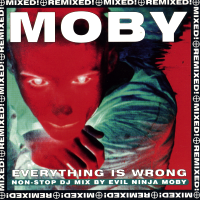 |
17:08: Procyon II by K. Sakamoto (Floating World Comics)
Very interesting artwork and an intriguing story.
| Anja Garbarek: Balloon Mood |  |
17:16: Étoilé 3: Chariot de dessert by Brahy/Lehericey/Desmarès (Zoom)
I’ve read the previous two albums in the series, but I don’t remember much of them. I was a few pages in before I realised that I wasn’t reading a recap — this is the most choppily told French(ey) comic book I’ve read in a while.
But it works? It’s a cacophony of voices, characters and scenes — extremely condensed, and you really have to infer what has been happening based on a few lines of dialogue here and there and people glancing at each other etc.
It’s fun! You really have to pay attention.
*ding dong* Ain’t got time to make food… er… chevre much?
Hm… Ooh! That’s a delicious pizza. Walnuts, prosciutto, honey? And ruccola and chevre. Dee lish. New pizza place around the corner. Finally a good takeaway place nearby again.
Spoilers! This book ends in a pretty unique way — one of the protagonists gets bad news, falls into the sea (this is two panels), and then… the rest of the pages are blank.
That’s pretty audacious, even for a book this assured.
(Unless it’s a printing error, of course. My guess would be “not”.)
I had to google to see what people thought of it, and… I’m guessing it’s half 1 star votes and half 5 stars? I don’t know. My guess is that opinion will be divided.
| Microstoria: _snd |  |
18:40: Nova Graphica by Laura Ķeniņš (Conundrum Press)
This anthology starts off with two ghost stories…
… so I thought this was gonna be all scary stuff?
But, not, then we cover all kinds of stuff — and it’s all stuff about Nova Scotia.
It’s an interesting anthology; lots of different approaches and stuff.
Oo. Rainbow.
| Aphex Twin: Richard D. James Album |  |
19:19: Grass of Parnassus by Kathryn Immonen & Stuart Immonen (Adhouse Books)
Lovely artwork.
I feel they’re going for a Starstruck-like complexity and density, but they’ve landed at incomprehensible instead. It feels less like a well-imagined world you’re getting glimpses of and more like throw-everything-at-the-wall.
Perhaps it read better when serialised on Instagram.
I guess there’s a huge fan base for the Immonens? There’s a ton of supplementary material in the book… the book has more the feeling of a souvenir or keepsake than something meant to be read.
| Coil: Unnatural History III |  |
19:48: På glid by Moa Romanova (Kaunitz-Olsson)
I feel like I’ve read hundreds of comics drawn in variations of this style over the years. And coupled with the faux riso colour scheme, it’s very Q1 2022.
Unusual for books drawn in this style, it’s apparently an autobio? Here she goes to LA and stays with the bassist from Melvins.
Oh! I’d forgotten that I’ve read a book by Romanova before — the Goblin Girl thing. That was fantastic and perhaps that’s why this looked so very familiar. Sorree! Anyway, this one feels like… there’s been an editor involved? Or just more expectations. It’s all rolling along very amusingly until The Dreaded Third Act appears unexpectedly, and we get a dramatic denouement and character development and all that boring stuff that’s necessary if something is to be adapted into a movie.
| Coil: Unnatural History III | 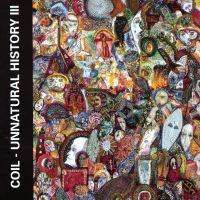 |
20:52: The Devil’s Grin by Alex Graham
This is pretty bizarre…
… but it’s an oddly compelling story. I was totally into it, but it was over just as it was getting started. There’s a “to be continued”, though, so let’s hope he finishes the story. It really feels like it was going somewhere.
| Coil: presents Black Light District – A Thousand Lights in a Darkened Room | 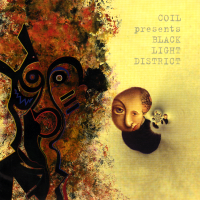 |
21:08: Hva er Hvitsten? by Sindre Goksøyr (No Comprendo Press)
This is a little autobio book about an art festival.
It’s fun. Not very ambitious, though.
| Coil: presents Black Light District – A Thousand Lights in a Darkened Room | 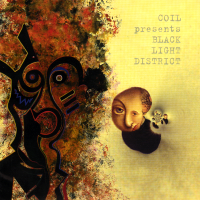 |
21:18: Meat and Bone by Kat Verhoeven (Conundrum Press)
Man, this makes for choppy reading. There’s like no flow from panel to panel or page to page. It’s very webcomic.
The artwork is like… a mixture of Belgian children’s comics, modern animated cartoons and… Picasso. But not in a good way. I thought the brown-haired one had dreadlocks until many pages in.
An what’s with those brush strokes here and there? I initially thought they were meant to convey, say, embarrassment or high emotion, but they seem to be placed pretty much at random.
This was pretty tough sledding, and I ditched it after 60 pages.
| Coil: presents Black Light District – A Thousand Lights in a Darkened Room | 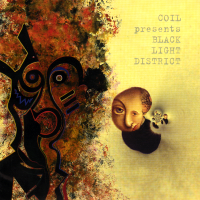 |
21:54: Cowlick II by edited by Floyd Tangeman (Deadcrow)
As usual with these Tangeman anthologies, it’s a wild ride.
Lots of weird and interesting stuff.
| Orbital: In Sides | 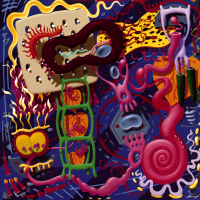 |
22:08: The Tenderness of Stones by Marion Fayolle (New York Review Comics)
I love the artwork and the design of these pages.
This is about a guy dying and his family having to deal with that, but told as an allegory. (Sort of.) So it’s about love and resentment, and it’s quite original and somewhat moving. But it gets slightly repetetive in, like, the third quarter of the book or something.
| Stereolab: Emperor Tomato Ketchup |  |
23:00: Les tours de Bois-Maury – integrale 1 by Hermann (Faraos Cigarer)
Oh, I think I may have read this before, like back in the 80s?
Hm… I do recognise one of the covers there — I’m guessing it started just a bit too late for me to read back then. (When I went traipsing off to university in the late 80s, I cut back severely on comics buying.)
Ah, yes — this is Hermann’s entry into the 80s oldee-tymey comics drama stakes. His main thing has been contemporary/future dystopian action/adventure, but there was this whole historical costume melodrama thing that was suddenly a signifier of Respectable Comics For Adults in the 80s, if I remember correctly. Les passagers du vent by Bourgeon was patient zero, I think? And this was made three years later, apparently.
Hermann’s artwork is attractive in that scratchy way as usual, and his facial repertoire is approx. one point two faces, which makes following this story slightly difficult — there’s so many characters, and their relation to each other are often obscure.
The second album is much more entertaining.
And by the third album, I see that I somewhat misremembered the genre: There’s not that much drama here. It’s pretty episodic, and we follow a knight that meets a new group of characters every album. It’s better than I remembered, really, but it’s not… er… that interesting?
OK, I’m wilting now, but one more.
| Dead Can Dance: Spiritchaser | 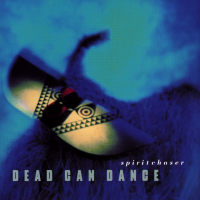 |
00:27: The Book Tour by Andi Watson (Top Shelf)
Er… is this really Andi Watson? I thought Watson drew more like this:
Is it the same person or is there one art style for “adult” books and one for the rest?
Is this supposed to be reproduced like this? The lines keep disintegrating? I guess it’s probably part of the general conceit — the art style looks very 50s, so it’s reproduced as if it’s shot from a 50s paperback?
This is so derivative. It’s the ol Spiral Into Nightmare thing: a guy away from home, suspected for nefarious crimes, and things keep getting worse and worse. And it’s meant to be funny, of course, but it’s just tedious.
So has is been adapted into a movie yet?
| Tortoise: Millions Now Living Will Never Die | 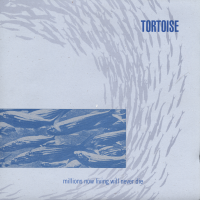 |
01:32: The End
By Jove! It’s late! I should go to bed.
That wasn’t the most inspiring stack of comics ever, was it? No. A couple of outright duds and half a dozen not completely successful comics. The rest were good, but that’s a below average day.
At least the window is less covered-up now.
Hey, that’s the wrong aspect ratio for the screenshots…
There, that’s better. So weird — with the gpu-next renderer in mpv, the image looks fine on the screen, but the screenshot is in the wrong aspect ratio…
Aww. I can see why this was a box office smash at the time — it’s so shamelessly cheesy. I love it.
This movie has everything — mistaken deaths and identities and death bed confessions and priests sworn to silence and one. coincidence. after. another. Piling everything on. And it kinda works? It’s fun!
But… when they don’t pour it on, and they have to take a pause here and there, the movie kinda collapses? So it’s “oo zz oo zz”.
Nobody’s Children. Raffaello Matarazzo. 1951.
This blog post is part of the Eclipse series.